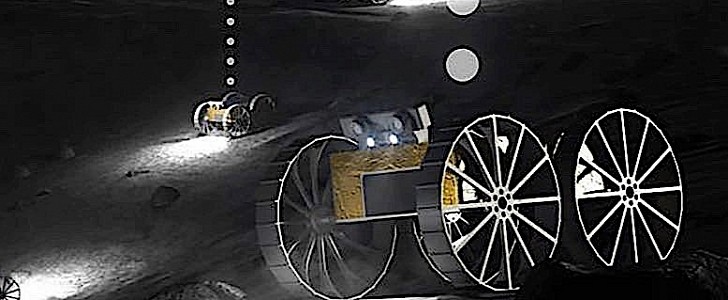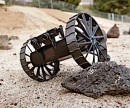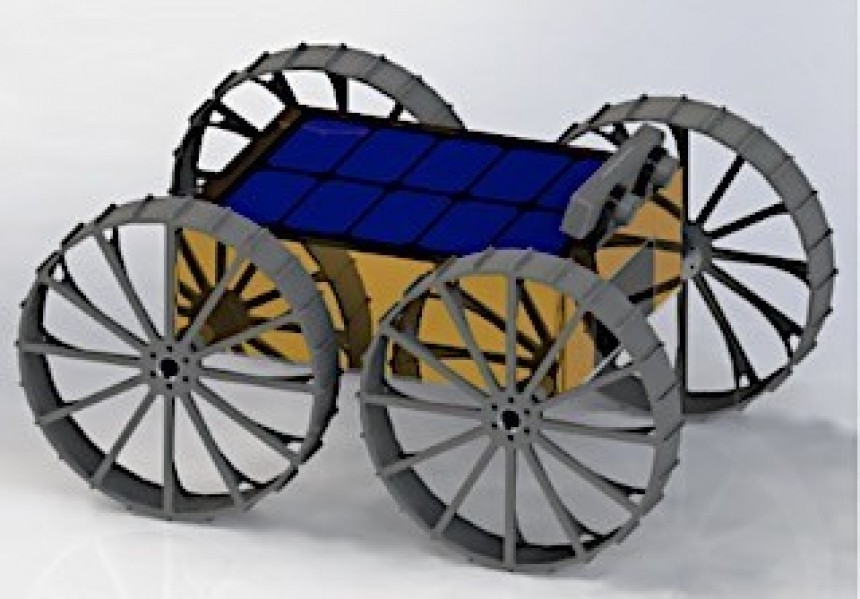Later this year, humanity’s second Moon adventure is set to begin. The uncrewed Artemis I mission will take off to prove both the Space Launch System rocket and the Orion capsule work as advertised, opening the doors for humans to return up there.
Unlike the Apollo program, Artemis is being designed as a long-term exploration effort, one that might very well end up with some of us actually going to live on the Moon. But on its own, this program is not nearly enough to make that happen. And this is why NASA and the others involved in the space race are working on many other additional projects.
One such project is called CADRE. That stands for Cooperative Autonomous Distributed Robotic Explorers, and it’s a complicated way for the NASA’s Jet Propulsion Laboratory to say “robots that can move and talk on their own to map places.”
The key phrase here is “move and talk on their own.” Many, if not all of the hardware we’ve sent so far to other places in the solar system have had to receive instructions from Earth to be able to conduct their business. Because of complicated celestial mechanics, distance, but also obstacles, foreseen or otherwise, that’s not always possible.
For CADRE, NASA is trying a different approach, and that means having these things move on their own accord using limited instructions and data reveiced from their mates. They'll not completely out of reach, of course, but will be independent when, for instance, they get into difficult-to-reach places like craters and caves.
The most important thing these robots will be able to do is talk to each other, if need be, or with the base station, using methods of communications, including wi-fi based, that are still in the works.
“There are a number of areas where this can be extremely impactful,” project manager Matthew Frost says about this idea. “By increasing autonomy of multi-agent systems, we will reduce the number of times when the rovers have to ‘phone home’ to get ground control instructions.”
Now, the CADRE robots are not particularly complex, nor are they physically impressive. They are the size of a shoe box, and will probably look like that as well, and are only equipped with wheels to move about, an onboard computer to act as a brain, some communications hardware to send and receive messages, and a camera with sensors to allow them to move about safely.
CADRE machines will be networked to each other and their home base, sharing information with one another, and going about their business “without being controlled by astronauts or engineers on Earth.”
The main reason these machines are being made has to do with our need to better understand the Moon, if some of us are to live there. One way to do that is to have accurate maps of the place, which might reveal dangerous places, locations with resources, and even potential targets for science missions.
People working on CADRE even dream of sending the robots down the Moon’s lava tubes. Sure, some of them might not be able to get out of there, but remember, these things can talk to one another, and whatever they learn during their suicidal mission could easily be relayed to the others, and then passed on to humans.
Work on these machines is fairly advanced. NASA is already testing them in the so-called Simulated Lunar Operations lab (SLOPE), where terrain conditions similar with the ones on the Moon can be replicated.
What’s more, the space agency even selected the company that will first deliver CADRE to the Moon. That would be Intuitive Machines, which will have to launch, fly and land them in 2024, very possibly even before the first Artemis astronauts get there.
One such project is called CADRE. That stands for Cooperative Autonomous Distributed Robotic Explorers, and it’s a complicated way for the NASA’s Jet Propulsion Laboratory to say “robots that can move and talk on their own to map places.”
The key phrase here is “move and talk on their own.” Many, if not all of the hardware we’ve sent so far to other places in the solar system have had to receive instructions from Earth to be able to conduct their business. Because of complicated celestial mechanics, distance, but also obstacles, foreseen or otherwise, that’s not always possible.
For CADRE, NASA is trying a different approach, and that means having these things move on their own accord using limited instructions and data reveiced from their mates. They'll not completely out of reach, of course, but will be independent when, for instance, they get into difficult-to-reach places like craters and caves.
“There are a number of areas where this can be extremely impactful,” project manager Matthew Frost says about this idea. “By increasing autonomy of multi-agent systems, we will reduce the number of times when the rovers have to ‘phone home’ to get ground control instructions.”
Now, the CADRE robots are not particularly complex, nor are they physically impressive. They are the size of a shoe box, and will probably look like that as well, and are only equipped with wheels to move about, an onboard computer to act as a brain, some communications hardware to send and receive messages, and a camera with sensors to allow them to move about safely.
CADRE machines will be networked to each other and their home base, sharing information with one another, and going about their business “without being controlled by astronauts or engineers on Earth.”
People working on CADRE even dream of sending the robots down the Moon’s lava tubes. Sure, some of them might not be able to get out of there, but remember, these things can talk to one another, and whatever they learn during their suicidal mission could easily be relayed to the others, and then passed on to humans.
Work on these machines is fairly advanced. NASA is already testing them in the so-called Simulated Lunar Operations lab (SLOPE), where terrain conditions similar with the ones on the Moon can be replicated.
What’s more, the space agency even selected the company that will first deliver CADRE to the Moon. That would be Intuitive Machines, which will have to launch, fly and land them in 2024, very possibly even before the first Artemis astronauts get there.










